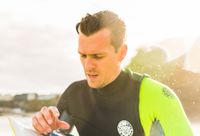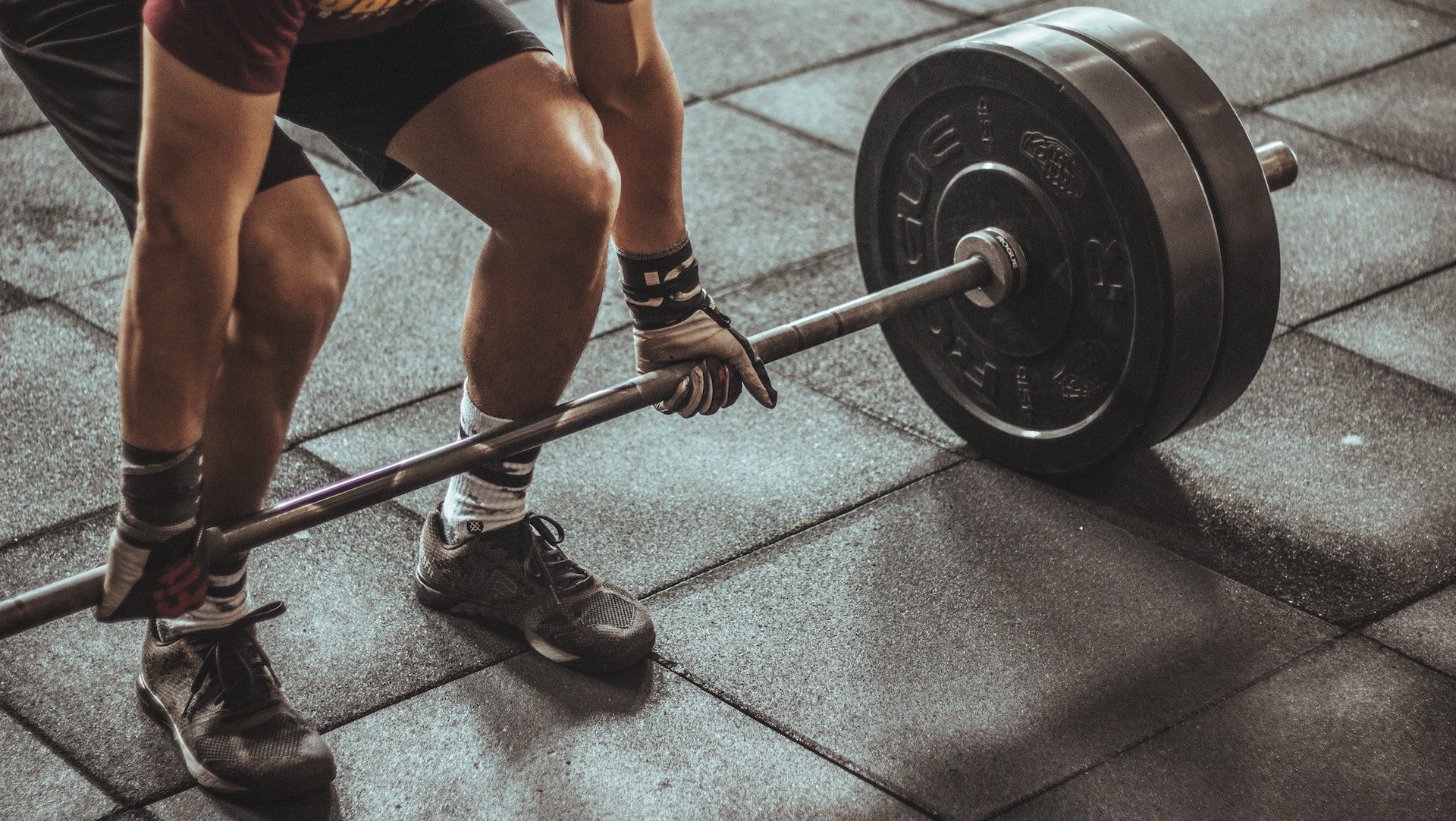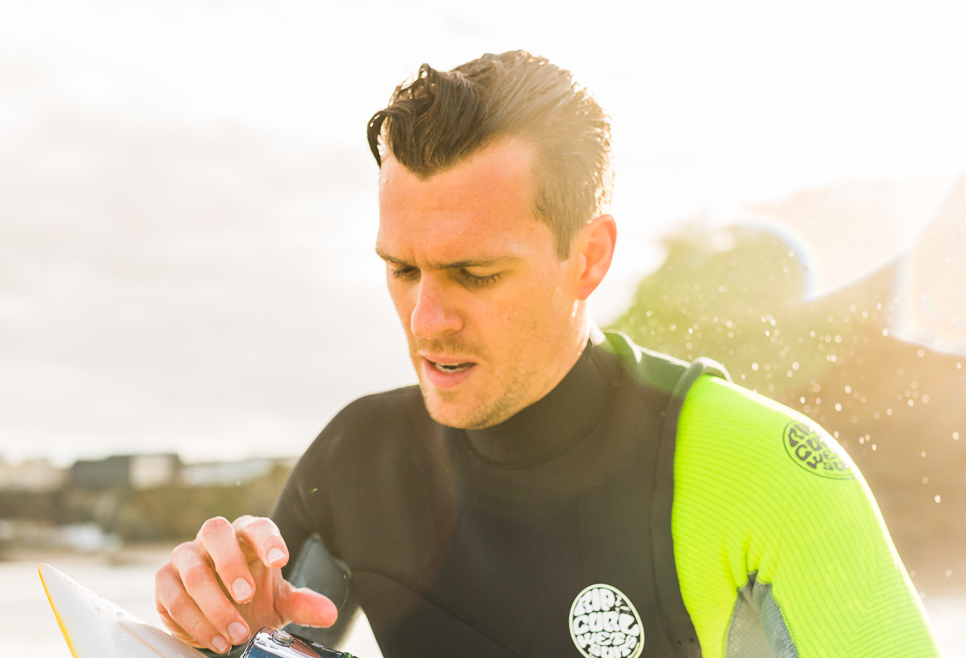Best workout for athletic power: welcome to the Tower of Power
Get stronger, faster and shredded like a superhero with this pure power workout guide


People often think that power and strength is the same thing, but they're not. Do you know how we know? Because we asked the experts for their opinion and Cristina Silva and fellow PT Peter Fy, both USN ambassadors, came back with a resounding answer.
"The term strength refers to how much weight you can lift, while power is a combination of strength and speed.
"Bodybuilders who are generally strong don't usually make powerful athletes, as they usually lack speed, which means they also lack power. Both speed and strength are essential to generate power, which is why this sort of training is very important to professional athletes," they explain in beautiful harmony.
So there you have it, if you want to train for power, you need to incorporate exercises that both strengthen or build muscle, while also focussing on a workout that activates the fast twitch muscle fibres in your body.
"Your body is composed of two types of muscle fibres: slow twitch and fast twitch. Slow twitch fibres are used for endurance activities, like running, biking or swimming longer distances, and tend to be thinner in diameter," Peter explains.
"Fast twitch muscle fibres, on the other hand, are called upon during anaerobic and power activities. This is why athletes train for power, so the body can learn to quickly recruit these muscle fibres. In short, when the fast twitch fibres are trained and enhanced, you become a more powerful and athletic individual," he adds.
So there you have it, this workout is specifically designed to work those fast twitch muscle fibres and improve power and athletic ability.
Get all the latest news, reviews, deals and buying guides on gorgeous tech, home and active products from the T3 experts

Cristina Silva and Peter Fy: personal trainers, athletes and USN sports nutrition ambassadors.
A word on training for power

Power training places considerable amount of force on joints, ligaments and tendons, so both Peter and Cristina advise a strength training phase to allow the joints and tendons to get accustomed to the impact of explosive exercises prior to power training.
You can check out body building expert and Mr Olympia Ryan Terry's guide to strength training here.
"When working out, I put a strong emphasis on dynamic movements and spend a bit more time in the warm up so my muscles and joints become nice and supple," Cristina says.
"I generally recommend incorporating most explosive strength and power-based training immediately following the warm up, while the nervous system is still fresh," she adds.
The best equipment for pure power workouts
The great thing about this workout is that you can improvise with kit if you haven't got access to a well-equipped gym, or tractor tyre, for that matter.
However, there are a couple of cheap items that are well worth investing in, especially if you plan to carry out the workout at home or in the garden.
"In the gym, I can make use of dumbbells, barbells, boxes and kettle bells, but outside I get an opportunity to push, pull and throw something heavy as far and high as I can. I especially like hill sprints, tyre flips, medicine ball tosses and long jumps. The only limitation is my resourcefulness," says Cristina.
With that in mind, we have a guide to some of the best equipment out there to get you started. Check out some of the links below.

Kettlebells are a worthwhile investment for home use
How to perform the ultimate workout for pure power

The main focus is to perform the movement as quickly and explosively as possible with good technique. So Peter recommends light to moderate loads, which is anywhere from 0-60% of your one-rep maximum.
With that in mind, check the number of reps required for each exercise and pick a weight that you know you will be able to perform the entire set with good form. Do not go crazy with the weights, because you will either burn out too fast or cause injury.
This workout can be slotted into your regular weekly routine or performed three times a week as a good foundation for further routines.
The ultimate workout for pure power

Complete the reputations stated, rest for 60 seconds and then move on to the next. Complete the entire circuit three times and call the session done.
Tyre Flip
Reps: 10
Tyre flips work the core, along with the posterior chain (back, glutes and hamstrings). It also works numerous stabiliser muscles throughout the body and is a great strength and endurance builder.
Begin by gripping the bottom of the tyre on the tread, back flat and position feet slightly away from the base of the tyre. Your chest should be driving into the rubber.
To lift, extend through the hips, knees and ankles, driving into the tyre and upwards.
As the tyre reaches a 45-degree angle, step forward and drive a knee into the tyre. Flip and repeat.

Cristina working with the tyre
Kettlebell Swings
Reps: 20-25
Heavy kettlebell swings are great power building exercise but many people don't have access to a good range of weighted bells. You can always add in a resistance band to aid progression if you need.
Stand over the kettlebell with feet hip-width apart, chest up and shoulders back.
Squat down, grip the kettlebell with palms facing inwards and thumbs wrapped loosely around the handle.
Stand tall, still gripping the kettlebell. Keep arms long and loose while squeezing shoulders blades together and engaging your core. Soften knees, shift bodyweight into heels and lower your butt backwards and towards the floor.
Drive through the heels, explode through hips, contracting your core and squeeze your glutes to send the weight swinging upward from quads to about chest height, with the arms fully extended.
As the kettlebell begins to descend, shift weight back into heels while hinging at the hips and load the hamstrings and glutes. Receive the weight - allowing the kettlebell to ride back between the legs - and repeat the previous step for another rep.

Hill Sprints
Reps: 8
Sprints have many benefits, including fat burning, developing strong quads and hamstrings, building athleticism and increasing power.
Find a hill with a steep incline of about 10% and about 50 yards long. Sprint up it as fast as you can and back down.
Can't find a hill? Crank a treadmill up to a steep incline and boost the speed up to a sprinting pace, carefully hop on the deck (making sure to keep your balance) and sprint for 10-20 seconds before hopping off and catching your breath.

Sprint for the win
Overhead Squat
Reps: 6
There are numerous Olympic lifts that could easily sit in this section, but we've chosen just one of them. They are also difficult to learn and master, so spend some time working on correct form before loading up the weights.
Stand tall with a barbell held overhead, arms fully extended, eyes forward and back straight.
Squat down keeping the bar extended above the head with head and eyes straight ahead, core engaged and torso vertical with knees bent slightly out.
As with any squat motion, make sure the knee follows the direction the feet are pointing and watch the knee doesn't hover over the tips of your toes when in the deep squat position.
Drive through the heels, keeping a good form and flat back, to return to the starting position.

Mastering the squat is key to max power
Medicine Ball Chest Pass
Reps: 10
The medicine ball is an extremely valuable piece of kit when training for power and can be used for a variety of exercises. But here, we are going to focus on the chest pass for increased upper body power.
Think of this like a chest pass in basketball but your teammate is going to be a solid brick wall.
Stand close to a wall facing it and hold the ball at your chest. Explosively pass the ball from your chest to the wall as hard as you can.
Catch the rebound, reset and repeat.

Box Jumps
Reps: 3
Nailing your technique with the box jump is essential, so keep your feet together, brace the core, drive through your toes and try to land in the centre of the box with your feet flat, at least hip distance apart, with bent knees in a squat position.
Aim to make the jump as challenging as possible, so aim for as tall a box as possible, and keep the number of reps down. This should be an explosive move, so use the arms to lift you off the ground.

Clap Push-Ups
Reps: 10
The clap push-up enhances core stability, builds shoulder mobility, quick reflexes and upper-body strength.
Similarly with the box jump and other plyometric exercises, adding the clap into a regular press-up adds an explosive element that targets fast twitch muscles.
Get into regular push up position but put your hands and feet slightly wider than shoulder width.
Keep your weight on the bases of your palm. Drop until your chest almost hits the ground.
Push with the base of your palm to generate maximum power. Martial artists use this palm area to break bricks, because it is the most powerful.
Push explosively as if you have just touched a hot stove and clap your hands mid-air. Land back on the same spot, using the arms and shoulders to absorb the impact of landing.

Battle Rope Slams
Reps: 20
Battle ropes are an excellent way for torching body fat and developing muscular and cardiovascular endurance.
The equipment involves the entire body, switches on the neuromuscular system to apply force through core and extends to the arms and legs. It also develops a King Kong grip, while placing minimal stress on the joints.
Grabbing a set of battle ropes with a closed grip, get into a quarter-squat position with your arms at rest.
With a rope in each hand, raise your arms, forcibly flex and extend your shoulders downwards, slamming both ropes as you squat.
After each slam, extend at the hip and stand up, returning to the starting position.

Cristina Silva and Peter Fy are ambassadors for leading sports nutrition brand USN, which has just launched their brand new USN Trust lifestyle range. To find out more visit www.usn.co.uk.
Leon has been writing about automotive and consumer tech for longer than he cares to divulge. When he’s not testing the latest fitness wearable and action camera, he’s out in a shed fawning over his motorcycles or trying not to kill himself on a mountain bike/surfboard/other extreme thing. He's also a man who knows his tools, and he's provided much of T3's drills coverage over the years, all without injuring himself.
